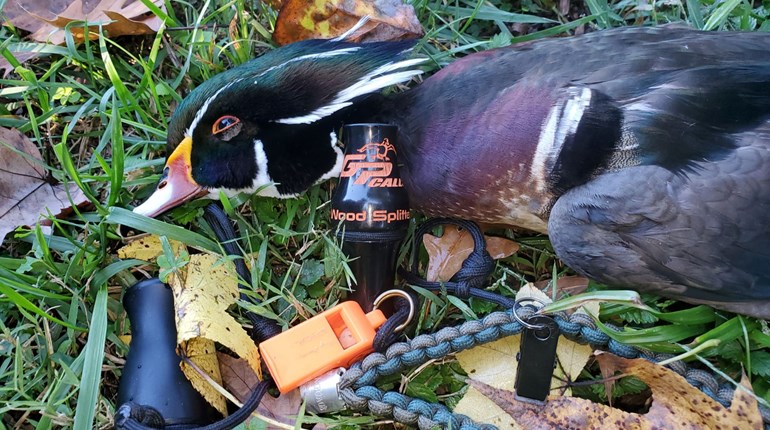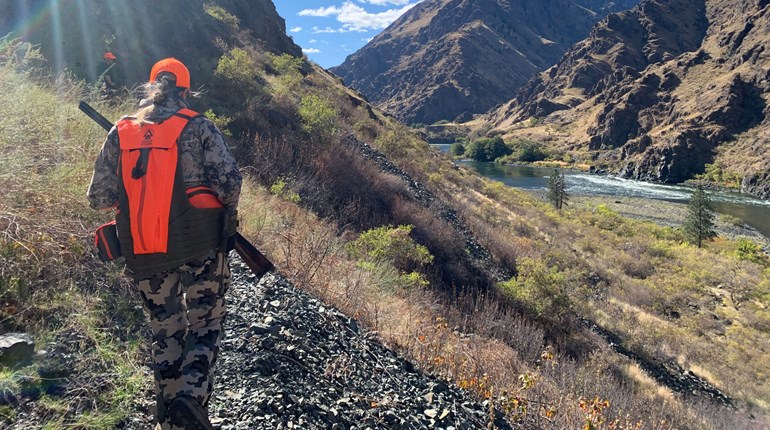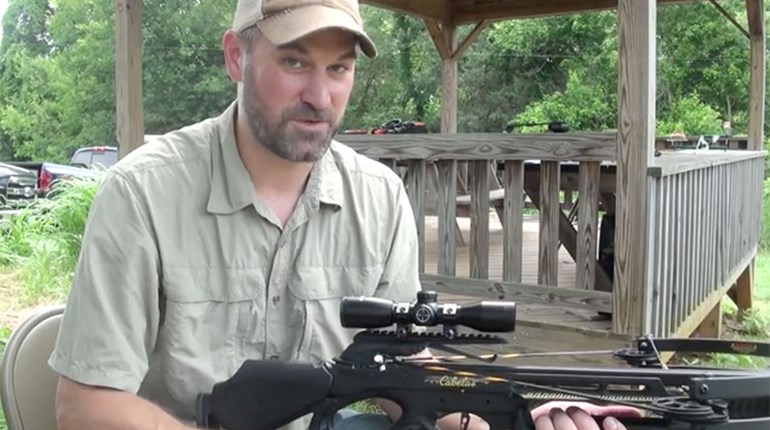
Even in the age of GPS and satellite phones, every year, hunters get lost in the woods. Most of the time, they're found within 24 hours and are merely tired, chilled and hungry. That said, an unprepared outdoorsperson faces very real dangers to his life and health. Hypothermia is chief among them, along with injury or untreated medical events. The thing is, you can reduce that risk very effectively without spending money (or even very much time). Here are our top 10 tips to stay safe in the woods ... whether you're a hunter, hiker or camper.
1. Know the area you're hunting
Always be conscious of your surroundings, prominent points and landmarks. Be sure to occasionally turn around and look behind you so you will remember what it looks like when you're coming back. If you're on a trail, don't hesitate to put a temporary marker at intersections (like a chalk mark on a tree). Things can look different on your return—especially if you return in the dark.
2. Don't rely solely on electronics
Devices like GPS, cell phones and two-way radios are wonderful, and you should keep them charged and with you. That said, as anyone who's owned a smart phone can tell you, electronics can and do fail, often without warning. Maps and compasses won't.
3. Tell someone your plans and set a check-in time
It's pretty normal to extend your time in the field and move around while hunting, so many hunters are vague about their plans. That's why you should set an absolute deadline and have someone who can alert the authorities if you haven't returned. The same goes for your hunting partner. Hunters often get separated, so set up a rendezvous time and place and decide in advance when a third party will seek help if you or your partners do not return in time.
4. Watch for extreme weather changes
Cold, wet weather can mean the difference between an uncomfortable situation and a life-threatening one. Remember even on clear days temperatures can change dramatically. A warm, sunny afternoon can quickly drop to subfreezing after dark, and daily temperature swings of 30 to 40 degrees are fairly common during fall. This brings us to our next tip ...
5. Dress for or carry clothes for the worst weather you're likely to encounter
Dressing in layers is a good way to account for weather changes, and wearing a daypack means you can stash clothes when they're not in use and keep them handy when you need them. Avoid cotton clothing, which is comfortable when dry, but provides no warmth when wet. Wool and modern, synthetic fabrics will insulate—even when damp or wet—and will typically dry faster.
6. Be prepared to build a fire
Whether it's matches, a lighter or other device, carry a fire starter that's weatherproof. Know how to start a fire in all weather conditions ... and because wildfires start just as well in dry conditions whether it's hot or cold, remember to never leave a fire that's not completely extinguished.
7. Bring a flashlight or headlamp and extra batteries
They're valuable for navigating in early mornings or after dark and keep you from getting lost, as well as just being handy for a variety of purposes.
8. If you get lost, admit it to yourself and hug a tree
The best thing to do if you get lost is to stop traveling. Reports from others who have become lost over the years show that many people—even highly experienced outdoorspeople—experience a sudden and nearly irresistible urge to run when they realize they're lost. This seems to be some sort of "cognitive glitch" in the human psyche. The best advice is to sit down and literally hug a tree—as in, put your arms around it and hold on tight—until that urge passes. The further you go, the harder it'll be to find you, so stay put unless you're in immediate danger where you are.
9. Know your survival priorities
People can survive two weeks without food, but hypothermia and dehydration can kill very quickly. Your priorities, therefore, are warmth and water. This is why your survival kit should include firestarters, a space blanket and paracord or fishing line to construct a simple shelter. Once you get a fire started, you can use it to boil water to make it safe to drink.
10. Don't forget your vehicle and ATV
Have your vehicle ready for the backcountry and prepared for minor breakdowns, such as flat tires or dead batteries. A separate survival kit for your vehicle is a good idea ... whether you're hunting or not!







































